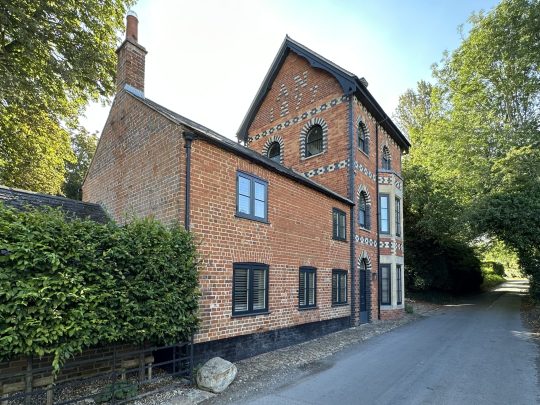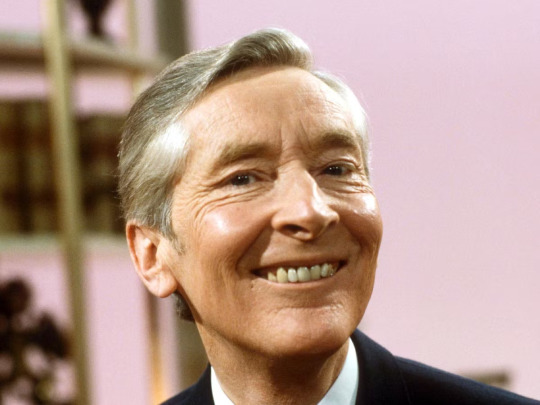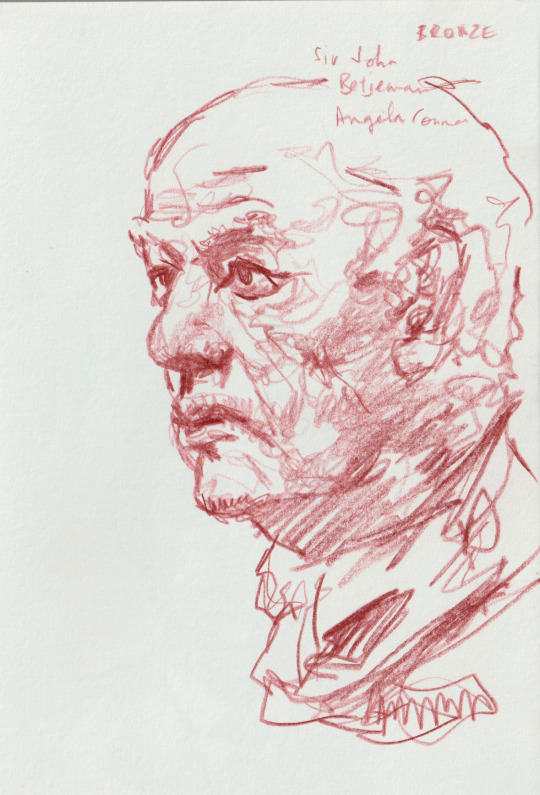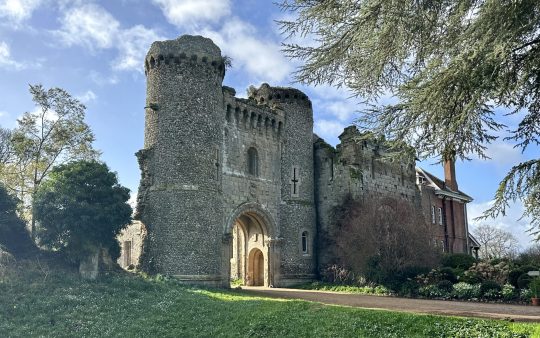#Sir John Betjeman
Text
London’s Eiffel Tower
A rival to the #EiffelTower in #Paris was planned to be built on a marshy site in #Wembley
The twin towers of Wembley Stadium were an iconic symbol of English football until they were demolished in 2003 but Wembley Park would have boasted an even more impressive structure had the ambitions of railway entrepreneur and Liberal Unionist MP, Sir Edward Watkin, come to fruition. Irked by the rapturous acclaim that had greeted the opening of the Eiffel Tower, the world’s tallest structure,…

View On WordPress
#Eiffel Tower#Freeman’s Journal#Metro-Land#Metropolitan Railway#Sir Edward Watkin#Sir John Betjeman#Watkin’s Folly
0 notes
Text
The Tower, Woolstone, Oxfordshire
In 1938 John Betjeman wrote a feature on ‘Gentlemen’s Follies’ for Country Life magazine. In it he noted a number of well-known follies, including the then very new tower built by Lord Berners at Faringdon, close to where Betjeman lived. He also mentioned another local folly, a tower in the village of Woolstone (then Berkshire, now Oxfordshire). So whilst the house above doesn’t look much like a…

View On WordPress
0 notes
Text
Plight of Norwood's White House attracting widespread support
Under threat: the Grade II-listed White House, in Norwood Grove, pictured here when properly maintained five years ago, has since been badly neglected by its owners, cash-strapped Croydon Council
A magazine architecture column that was first edited by Sir John Betjeman has added its considerable clout to the campaign to save and preserve the White House, the grand, Victorian-built mansion at the…

View On WordPress
#Covington Way#Croydon parks#Gavin Stamp#Mayor Jason Perry#Norwood Grange#P&O#Private Eye#Randall Davidson#Sir John Betjeman#The White House
1 note
·
View note
Text
County
God save me from the Porkers
God save me from their sons
Their noisy tweedy sisters
Who follow with the guns
The old and scheming mother
Their futures that she plann’d
The ghastly younger brother
Who married into land
Their shots along the valley
Draw blood out of the sky
The wounded pheasants rally
As hobnailed boots go by
Where once the rabbit scampered
The waiting copse is still
As Porker fat…
View On WordPress
0 notes
Text

“Oh God, make me good, but not yet.” (Evelyn Waugh)
Considered one of the great prose stylists of the the 20th century, Arthur Evelyn St. John Waugh (St. John being usually pronounced: Sinjun; 28 October 1903 – 10 April 1966), was an English writer of novels, biographies and travel books.
It was initially assumed that Evelyn would follow the family tradition and go to Sherborne School. But his elder brother, Alexander (known to everyone as Alec), who was himself at Sherborne, was asked to leave after a homosexual relationship came to light in 1915.
Instead, Evelyn was sent to Lancing College; completing his education at Hertford College, Oxford. And it was whilst at Oxford that he became friends with Sir John Betjeman, who famously brought his teddy bear, Archibald Ormsby-Gore (known to everyone as Archie), up to Magdalen with him; the memory of which inspired Evelyn to include Sebastian Flyte's teddy, Aloysius, in Brideshead Revisited.
As a young man, Evelyn acquired many fashionable and aristocratic friends and developed a taste for country-house society. His most famous works, including: 'Decline and Fall' (1928), 'A Handful of Dust' (1934), 'Brideshead Revisited' (1945), and the Second World War trilogy 'Sword of Honour' (1952–61).
For the serious devotees of Tradition: Archibald Ormsby-Gore was in Sir John Betjeman 's arms when he died. Archie now resides in St Pancras Railway Station, the home of Sir John Betjeman's statue. Sir John himself rests at the church of St Endoc, to the south of Trebetherick, in Cornwall. Evelyn Waugh rests at the church of St Peter and St Paul, Combe Florey, in Somerset.
63 notes
·
View notes
Text



Paul McCartney on Sgt. Pepper. Photos by Michael Cooper
(transcribed below)
I came up with the title and went to Robert with some drawings for the idea of the cover. I had come to the conclusion that The Beatles were getting a little bit safe, and we were a little intimidated by the idea of making 'the new Beatles album.' It was quite a big thing: "Wow, follow that!" So to relieve the pressure I got the idea, maybe from some from friends or something I'd read, that we shouldn't record it as The Beatles.
Mentally we should approach it as another group of people and totally give ourselves alter egos. So I came up with the idea of Sgt. Pepper's Lonely Hearts Club Band and the song 'It was Twenty Years Ago Today', and I started mentioning this to Robert in our late-night talks.
The original concept was actually a little bit different from how it turned out. I'd always liked those floral clocks that they have at seaside towns; they have a little green bank and put flowers in the shape of a clock. The original idea was that it was going to be a presentation from the Mayor of Middlesbrough or somewhere. There'd be this floral bank and there'd be us there and then at other parts of the cover we were going to have all the band's heroes--they were going to be on a photo, maybe behind the wall or something.
So there were these two ideas that eventually got pushed into one and then I said to everyone, 'OK, who are your favourites?" Marlon Brando was one of the first choices, and James Dean, Monroe--all those obvious ones and then other suggestions started to come in. George came up with all the Hindus, Babaji was his, and then there were things like footballers from our youth, you know, we had little joke things--Albert Stubbins--he's a footballer and so he was in and then it kind of snowballed.
I took all these ideas, the floral clock, the kind of presentation by a mayor, these heroes of ours, and Robert and I went with them to Peter Blake. Peter had all these sculptures of little people around, because he was married to Jann Haworth at the time and Jann was doing all those surfers and things like John Betjeman as a teddy bear and all that, so they crept in there.
The famous flowers that started off as the floral clock then became a guitar and the word 'Beatles'--they weren't marijuana leaves, they just looked like them--and so the Americans thought "Wow, well, this is it, it's all happening." We started shooting the cover and people would say, "Oh, can I come, can I come?" and we let more or less everyone come along, but eventually it got to the point where we had to say, "That's enough!"
So Robert would get all this and he'd show all the Indian stuff to George; and there'd be H.G. Wells and Johnny Weissmuller, Issy Bonn and all those people, and Burroughs would have been a suggestion probably from Robert, and there were a few kind of LA guys that Robert had slipped in. He'd slip in people that we didn't even know but we didn't mind, it was the spirit of the thing.
I don't know how many nights Michael spent on it but we were only there for that one night, the last night. They did all this without us. It was very nice when we turned up and it was all done, but not as impressive as when I saw the cover; just actually looking at the set wasn't as impressive as seeing the finished cover.
Jesus and Hitler were on John's favourites list but they had to be taken off. John was that kind of guy but you couldn't very well have Hitler and so he had to go. Gandhi also had to go because the head of EMI, Sir Joe Lockwood, said that in India they wouldn't allow the record to be printed. We said "You're kidding, they'll love it," but he said no, so that was something the lawyers made us take off. There were a few people who just went by the wayside.
We went to Burman's, the theatrical costumiers, to have all our outfits made up and the Stones did the same for the Satanic Majesties album.
It was great. The main centrefold was originally going to be a drawing by The Fool--Simon Posthuma and Marijke Koger, Dutch artists who'd produced some surrealistic work. They depicted us all up in the clouds and it was all very very acid, everything everywhere, lots of colours--but Robert didn't like it as art and so he vetoed it. We said "No man, it's really good. We love it, we love it."
The shoes were made by Anello and David, which was the first place we came into contact with, and we got our lovely handmade Beatle boots there.
Robert and I went down to Peter's house and Peter developed it all from there. The lists were his idea, and all the cut-outs instead of using real people, and then the floral clock got changed around; but basically it was the original theme.
The 'Welcome The Rolling Stones' was something they put in. They sort of asked us if we minded and we said, "No, no, not at all." Peter organized a fairground painter to paint the drum as that was someone that he used to hang out with.
From Blinds & Shutters
32 notes
·
View notes
Text

One of the interesting facets of the career of Kenneth Williams, who passed away this month (April 15th), 1988, was his long professional relationship with Michael Parkinson. In the beginning it wasn't easy, Parky later recalled that KW referred to him as 'north country nit' and 'thick Yorkshire git' in his diaries.
In late 1972, Kenneth Williams appeared on the Parkinson show with Sir John Betjeman and Maggie Smith. A conversation on architectural preservation broadened to include the right to strike, the behaviour of trade unions and working-class aspiration. Things got a little heated, although both Parky and KW were professional enough to know just how far to push it. Parky told Kenneth he was talking crap, Kenneth responded, "I've never been so insulted", which got a laugh and defused the tension.
youtube
Although it was quite mild in retrospect, the public response was such that Kenneth Williams was invited back for a full 70 minute show, with Michael Parkinson moderating a debate with union leader Jimmy Reid (Upper Clyde Shipbuilders' work-in) and including a Q and A from the audience. Kenneth did not get an entirely easy run, and appears to have underestimated Jimmy Reid's ability as a speaker and debater.
youtube
I have read (although not confirmed) that BBC controllers were unhappy at the complex political nature of the programme, and some of the confronting social conditions discussed, and insisted that the Parkinson show stick to light entertainment in the future.
Kenneth Williams continued to make appearances and was a prominent guest on the final UK episode (before the later reboot) in 1982. According to IMDb, he made a total of 11 appearances, including two on Parkinson in Australia; the only person to do more was Billy Connolly, but his spots included in the rebooted series from 1998-2004.
About the best encounter between Michael Parkinson and Kenneth Williams wasn't on the television at all. In July 1987, KW was Parky's guest on Desert Island Discs, for what was a fascinating, friendly and very warm conversation.
Michael Parkinson later said that he and Kenneth Williams were in 'no danger of becoming bosom friends', but expressed admiration for his talent and regretted that KW never really seemed to find professional or personal contentment in life.
Michael Parkinson turned 88 on March 28th this year (2023) and has just been seen out celebrating legendary cricket umpire Dickie Bird's 90th birthday.

(Image: The Telegraph)
#kenneth williams#michael parkinson#british cinema#british theatre#jimmy reid#social history#working class history#bbc tv#Youtube
21 notes
·
View notes
Video
21Dec2023. Birmingham New St. EE Class 20 20142 20189 (Ex D8142, D8189). [P1180539] by MrDeltic
Via Flickr:
Thu 21 Dec 2023 at 12:50. EE Class 20's 20142 SIR JOHN BETJEMAN and 20189 at Birmingham New St light with working [0Z20] the 12:03 Tyseley Standard Gauge Steam Trust to Kidderminster SVR. Previously D8142, D8189.
2 notes
·
View notes
Photo

Metro-Land is a slogan first coined by the Metropolitan Railway in about 1915, for promotional purposes; and later used as the title of a BBC documentary celebrating suburban life that grew up in the early 20th century around the Metropolitan Railway in the area north-east of London.
The documentary was made in 1973. It lasted some 50 minutes and featured a narration, partly in verse, by then Poet Laureate, Sir John Betjeman; his commentary, interwoven with black-and-white film shot from a Metropolitan Railway train in 1910.
Betjeman, whose sexuality can best be described as bisexual, was educated at Marlborough and later Magdalen College, Oxford. He had friendships with both W.H. Auden and Lord Alfred 'Bosie' Douglas (of Oscar Wilde fame). Whilst at Oxford, he famously brought his teddy bear, Archibald Ormsby-Gore, up to Magdalen with him; the memory of which inspired his Oxford contemporary, Evelyn Waugh, to include Sebastian Flyte's teddy, Aloysius, in Brideshead Revisited.
For the serious devotees of tradition: the Harrow School Song is heard accompanying scenes filmed in the School, and scenes showing one of Harrow's stained-glass windows also appear, to the accompaniment of 'The Sunny Side of the Street'.
Always time for one more tradition: 'Tit Willow' is played during scenes showing Grim's Dyke at Harrow Weald: the place where W.S. Gilbert (of Gilbert and Sullivan fame), tragically drowned in a pond in 1911. 'Tit Willow', being a song from Mikado (by Gilbert and Sullivan). Its use in the documentary as an ironic reference to Gilbert's unfortunate misadventure is clear: ('He slapped at his chest, as he sat on that bough, Singing “Willow, tit-willow, tit-willow”, And a cold perspiration bespangled his brow, Oh, willow, tit-willow, tit-willow, He sobbed and he sighed, and a gurgle he gave, Then he plunged himself into the billowy wave).
*
Metroland (Betjeman):
Harrow-on-the-Hill:
WHEN melancholy Autumn comes to Wembley
And electric trains are lighted after tea
The poplars near the Stadium are trembly
With their tap and tap and whispering to me,
Like the sound of little breakers
Spreading out along the surf-line
When the estuary’s filling
With the sea.
Then Harrow-on-the-Hill’s a rocky island
And Harrow churchyard full of sailors’ graves
And the constant click and kissing of the trolley buses hissing
Is the level to the Wealdstone turned to waves
And the rumble of the railway
Is the thunder of the rollers
As they gather up for plunging
Into caves.
There’s a storm cloud to the westward over Kenton,
There’s a line of harbour lights at Perivale,
Is it rounding rough Pentire in a flood of sunset fire
The little fleet of trawlers under sail?
Can those boats be only roof tops
As they stream along the skyline
In a race for port and Padstow
With the gale?
*
Baker Street Station Buffet:
Early Electric! With what radiant hope
Men formed this many-branched electrolier,
Twisted the flex around the iron rope
And let the dazzling vacuum globes hang clear,
And then with hearts the rich contrivance fill’d
Of copper, beaten by the Bromsgrove Guild.
Early Electric! Sit you down and see,
‘Mid this fine woodwork and a smell of dinner,
A stained-glass windmill and a pot of tea,
And sepia views of leafy lanes in Pinner –
Then visualize, far down the shining lines,
Your parents’ homestead set in murmuring pines.
Smoothly from Harrow, passing Preston Road,
They saw the last green fields and misty sky,
At Neasden watched a workmen’s train unload,
And, with the morning villas sliding by,
They felt so sure on their electric trip
That Youth and Progress were in partnership.
And all that day in murky London Wall
The thought of Ruislip kept him warm inside;
At Farringdon that lunch hour at a stall
He bought a dozen plants of London Pride;
While she, in arc-lit Oxford Street adrift,
Soared through the sales by safe hydraulic lift.
Early Electric! Maybe even here
They met that evening at six-fifteen
Beneath the hearts of this electrolier
And caught the first non-stop to Willesden Green,
Then out and on, through rural Rayner’s Lane
To autumn-scented Middlesex again.
Cancer has killed him. Heart is killing her.
The trees are down. An Odeon flashes fire
Where stood their villa by the murmuring fir
When ”they would for their children’s good conspire.”
Of their loves and hopes on hurrying feet
Thou art the worn memorial, Baker Street
13 notes
·
View notes
Photo

Founded in 1458 by William of Waynflete (Bishop of Winchester and Lord Chancellor to King Henry VI), Magdalen College (The President and Fellows of the College of St Mary Magdalen in the University of Oxford), is one of the constituent colleges of the University of Oxford.
The College stands next to the River Cherwell. Its grounds, stretching north and east, are most of the area bounded by Longwall Street, the High Street (where the Porter's Lodge is located), and St Clement's.
The Grove is a large meadow that occupies most of the north-west of the College's grounds. During the winter and spring it's the home of a herd of fallow deer. In the 16th century, long before the introduction of the deer, The Grove consisted of gardens, orchards and bowling greens. During the English Civil War, it was used to house a regiment of Parliamentary soldiers.
The Great Tower was built by William Orchard between 1492 and 1509. In a tradition dating to the days of Henry VII, the choir of Magdalen College sings from the top of it at 6 am on May Morning to the assembled mass of students and townsfolk celebrating in the streets below.
Perhaps the most dramatic period in Magdalen's history came during the reign of James II, when, in 1687, the President of the College died and James twice tried to force the Fellows to accept a President of his choosing. The Fellows refused, and James, losing patience, demanded all those who opposed him be expelled. This act caused national outrage, the courage of the Fellows was praised and the King was much criticised. Late in 1688, James reinstated the expelled Fellows, but it was too late to save him. He was deposed a few weeks later.
Notable alumni include Sir John Betjeman; Thomas Wolsey (later Cardinal Wolsey); T. E. Lawrence (Lawrence of Arabia); Dudley Moore; and Oscar Wilde.
Famous fictional alumni of Magdalen College include Bertie Wooster (from the long-running series of novels and short stories by P.G. Wodehouse), and Bridey (from Evelyn Waugh's Brideshead Revisited)
6 notes
·
View notes
Video
20142 'Sir John Betjeman', Birmingham New Street por Arriving Somewhere Photography
Por Flickr:
6Z76 1036 Kings Norton Ot Plant Dept to Crewe C.S.
8 notes
·
View notes
Text

Clevedon Pier Symmetry .....
Clevedon Pier is a seaside pier in the town of Clevedon, Somerset, England on the east shore of the Severn Estuary. It was described by Sir John Betjeman, as "the most beautiful pier in England" and was designated a Grade I listed building in 2001.
The pier was built during the 1860s to attract tourists and provide a ferry port for rail passengers to South Wales. The pier is 312 m (1,024 ft) long and consists of eight spans supported by steel rails covered by wooden decking, with a pavilion on the pier head.
The pier opened in 1869 and served as an embarkation point for paddle steamer excursions for almost 100 years. Two of the spans collapsed during stress testing in 1970 and demolition was proposed, but local fund raising and heritage grants allowed the pier to be dismantled for restoration and reassembled. It reopened in 1989, and ten years later was awarded the Pier of the Year from the National Piers Society, and a Civic Trust Award. The pier now offers a landing stage for steamers and is a popular attraction for tourists and anglers.
51 notes
·
View notes
Text

drawing of a bust of sir John betjeman in the national portrait gallery, London
3 notes
·
View notes
Text
The Costa Blanca HE (5 years later)
The Costa Blanca HE (5 years later)
Mind if I see your Mail? We used to share
Our Telegraph with people who’ve returned
The lucky sods! I’ll tell you what I’ve learned
If you come out here put aside the fare
To England. I’d run like a bloody hare
If I’d a chance, and how we both have yearned
To see our Esher lawn. I think we’ve earned
A bit of what we had once over there
That Dago caught the wife and me all right!
Herе on this…
View On WordPress
0 notes
Text
The Folly, Benington Lordship, Hertfordshire
In the grounds of Benington Lordship, an early 18th century mansion near Stevenage in Hertfordshire, is a sham ruin on a grand scale. Constructed in the 1830s it combined the roles of eye-catcher, gateway, smoking room and banqueting hall in one rambling structure.
Continue reading The Folly, Benington Lordship, Hertfordshire

View On WordPress
#Adventures in Motion Pictures#Barbara Jones#Benington Lordship#Hertford#Late Flowering Lust#Matthew Bourne#New Adventures#Nigel Hawthorne#Pelham#Pulhamite#Sir John Betjeman#Stevenage#Thomas Smith Architect
0 notes
![21Dec2023. Birmingham New St. EE Class 20 20142 20189 (Ex D8142, D8189). [P1180539]](https://live.staticflickr.com/65535/53412918934_2bc83c191a_b.jpg)
